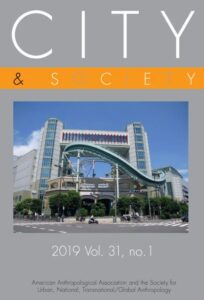Sacred Rhythms and Political Frequencies: Reading Lefebvre in an Urban House of Prayer (2018)

Authors: Moriel Ram, Meirav Aharon Gutman
Abstract: In recent years, Lefebvre’s concept of rhythm analysis has been implied in various ways to critically examine how rhythms are formed, disrupted, and reformed through different urban venues. One theme that this body of knowledge has yet to comprehensively examine, however, is how changes in the urban sphere impact the spatial rhythms of religious institutions in cities, which can be pivotal for understanding how religious institutions are formed as urban public spaces. This article addresses this issue with a rhythm analysis of a particular religious urban locus: a synagogue in the mixed Palestinian and Jewish city of Acre in northern Israel. Based on ethnographic fieldwork and an urban survey, the article discusses how different forms of rhythm‐making undergo a process of contested synchronization with linear and cyclical rhythms of the city. More specifically, how the ability to forge a space hinges on the ability to maintain a rhythmic cycle of attendance, which, in turn, is not only dependent on the ability to achieve synchronization amongst the needs of the different participants but is also intertwined with the larger linear cycle of urban life as a rhythmic equation that fuses the personal with the political, the linear with the cyclical, and the religious with the urban.